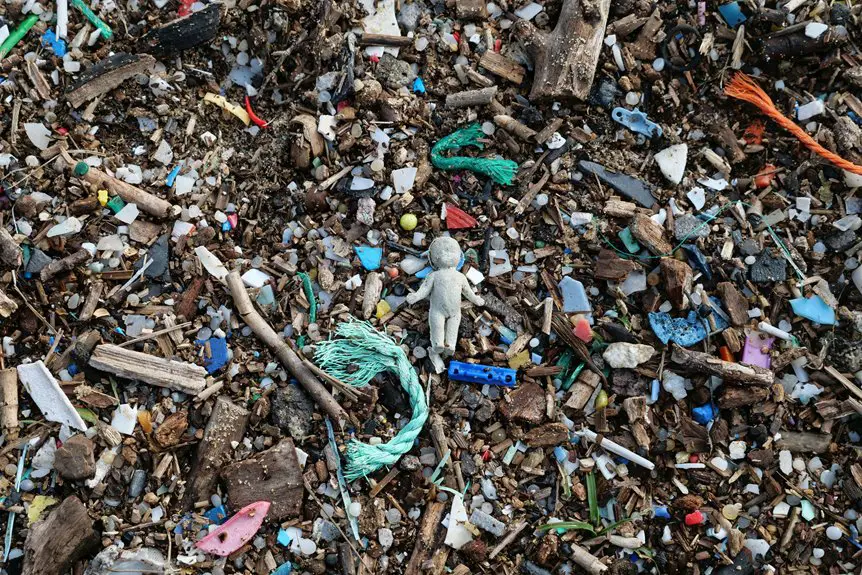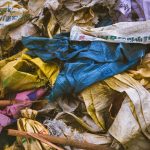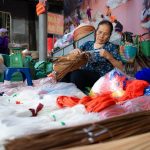It’s a coincidence that many people believe recycled polyester is a solution to our plastic problem, yet it still sheds microplastics when washed. Every time you toss those garments in the laundry, tiny fibers can detach, contributing to pollution. This raises important questions about sustainability and the impact of our clothing choices. What can you do to reduce this environmental burden while still enjoying your favorite fabrics?
Table of Contents
Key Takeaways
- Yes, recycled polyester garments shed microplastics during washing due to friction in the wash cycle.
- Microplastics are often smaller than five millimeters and can escape wastewater treatment filtration.
- The amount of microplastic shedding varies based on washing practices, like water temperature and cycle intensity.
- Using cold water and gentle cycles can significantly reduce microplastic shedding compared to hot water and aggressive cycles.
- Innovations, such as specialized washing bags and advanced fabric technologies, aim to minimize fiber loss during laundering.
The Nature of Microplastic Shedding
As you wear clothes made from recycled polyester, you mightn’t realize that these garments can shed microplastics with every wash.
Microplastics are tiny plastic particles, often less than five millimeters in size, that break off from fabrics during laundering. When you wash your recycled polyester garments, friction with other items in the wash and the washing machine itself can cause these microplastic fibers to detach.
While recycled polyester is an eco-friendlier choice, it still contributes to the growing microplastic problem in our waterways. These particles are often too small to be filtered out by wastewater treatment plants, leading to their entry into oceans and lakes.
Reducing microplastic shedding is essential, so consider washing your garments in a gentle cycle and using a microfiber-catching bag.
The Impact of Washing on Recycled Polyester
When you wash recycled polyester garments, the process can greatly affect their longevity and environmental impact. The choice of water temperature, detergent, and washing technique can influence how much microplastic fibers shed during each wash. Here’s a quick comparison of washing practices:
| Washing Practice | Fiber Shedding | Garment Longevity |
|---|---|---|
| Cold Water, Gentle | Low | High |
| Warm Water, Regular | Moderate | Moderate |
| Hot Water, Aggressive | High | Low |
Choosing cooler water and gentle cycles can help minimize fiber loss. So, next time you do laundry, consider your washing methods to protect both your clothes and the environment.
Environmental Consequences of Microfiber Release
Microfiber release during laundry poses significant environmental challenges, particularly for aquatic ecosystems.
When you wash synthetic fabrics, tiny fibers break off and enter wastewater systems, often bypassing filtration. These microfibers travel through rivers and oceans, contributing to pollution. Marine life mistakenly ingests them, thinking they’re food, which can lead to serious health issues for these organisms and the entire food chain.
Moreover, microfibers can absorb harmful chemicals, making them even more toxic. When larger fish consume contaminated smaller fish, these toxins accumulate, affecting species you might enjoy eating.
Ultimately, your laundry habits can have a ripple effect, impacting biodiversity and ecosystem health. Addressing microfiber release is essential for preserving our environment and ensuring a sustainable future for all living beings.
Innovations to Reduce Microplastic Shedding
Addressing the issue of microfiber release has sparked a wave of innovations aimed at reducing microplastic shedding during laundry.
One promising solution is the development of specialized washing bags, like the Guppyfriend, which capture microfibers before they enter wastewater systems.
Additionally, manufacturers are experimenting with new fabric technologies that reduce fiber loss during washing. These innovations often involve tighter weaves or coatings that help keep fibers intact.
Washing machines are also being redesigned to include filters that trap microplastics, preventing them from escaping into the environment.
By adopting these advancements, you can contribute to a cleaner planet while enjoying the benefits of recycled polyester clothing.
Embracing these innovations is a step toward more sustainable laundry practices.
Consumer Choices for Sustainable Fashion
How can your choices in fashion impact the environment? Every piece of clothing you buy contributes to the demand for resources and energy. By making thoughtful choices, you can promote sustainable practices. Consider the table below to guide your decisions:
| Choice | Benefit | Example |
|---|---|---|
| Buy Second-Hand | Reduces waste and resource use | Thrift stores, online swaps |
| Choose Eco-Friendly Brands | Supports sustainable production | Brands using organic materials |
| Opt for Quality Over Quantity | Guarantees longevity and less waste | Invest in durable items |
| Repair Instead of Replace | Extends the life of your clothes | DIY repairs or local tailors |
With these choices, you can help minimize your fashion footprint and encourage positive change in the industry.
Frequently Asked Questions
How Can I Identify Recycled Polyester in Clothing?
To identify recycled polyester in clothing, check the label for phrases like “recycled polyester” or “rPET.” You can also look for certifications like Global Recycled Standard, which guarantees the fabric meets recycling standards.
Does the Age of Recycled Polyester Affect Microplastic Shedding?
As time marches on, age can impact recycled polyester’s microplastic shedding. Older fibers might break down more, releasing microplastics during washes. You should consider fabric age when choosing eco-friendly clothing options for sustainability.
Are There Specific Brands Known for Low-Shed Recycled Polyester?
You’ll find several brands focusing on low-shed recycled polyester, like Patagonia and Adidas. They emphasize innovative technology in their fabrics, reducing microplastic shedding and promoting sustainable practices for environmentally conscious consumers like you.
What Are the Long-Term Effects of Microplastics on Human Health?
Microplastics can affect your health in various ways, including causing inflammation, disrupting hormones, and accumulating toxins. As research unfolds, you’ll want to stay informed and consider reducing your exposure to these persistent pollutants.
Can Microplastics From Recycled Polyester Be Recycled Again?
You can recycle microplastics from recycled polyester, but the process is complicated. While it’s possible, the efficiency depends on the material’s condition and how the recycling system is set up. It’s not always practical.
- The Use of Nonwovens in Construction and Civil Engineering - July 11, 2025
- The Use of Nonwovens in Construction and Civil Engineering - July 11, 2025
- The Use of Nonwovens in Construction and Civil Engineering - July 11, 2025







